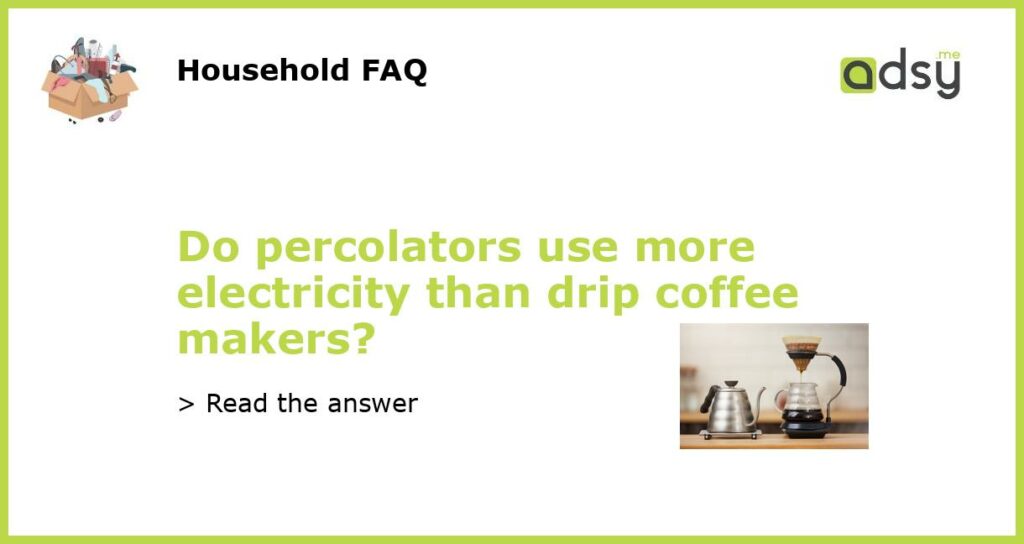Percolators vs. Drip Coffee Makers: Which Uses More Electricity?
When it comes to making a great cup of coffee, many people debate whether to use a percolator or a drip coffee maker. Each method has its own advantages and disadvantages, but one question that often comes up is which one uses more electricity. In this article, we will examine the energy usage of percolators and drip coffee makers to help you make an informed decision.
The Science Behind Percolators and Drip Coffee Makers
Percolators work by boiling water and forcing it up through a tube, then running the hot water over the coffee grounds. This process is repeated until the desired strength is reached. Drip coffee makers, on the other hand, heat water in a chamber and then allow it to drip through a filter containing coffee grounds.
Comparing Energy Usage
When it comes to energy usage, percolators generally use more electricity than drip coffee makers. The reason for this is the continuous boiling and reheating of water in a percolator. This constant heating requires a higher wattage to maintain the temperature, resulting in more energy consumption.
In contrast, drip coffee makers have a lower wattage because they only need to heat the water once. Once the water is heated, it is dripped over the coffee grounds and then into the pot. This process does not require continuous heating, so it uses less electricity.
Calculating the Energy Consumption
To better understand the energy usage of percolators and drip coffee makers, let’s compare their wattage and calculate the energy consumption per cup of coffee. On average, a percolator has a wattage range of 800-1500 watts, while a drip coffee maker typically ranges from 600-1000 watts.
Let’s assume you brew a 12-cup pot of coffee using a percolator with an average wattage of 1200 watts. The brewing time for a percolator is usually around 10 minutes. This means that the percolator will consume 200 watts per brewing cycle (1200 watts divided by 6 cycles, since each cycle takes 2 minutes).
On the other hand, let’s assume the same 12-cup pot of coffee is brewed using a drip coffee maker with an average wattage of 800 watts. The brewing time for a drip coffee maker is typically around 5 minutes. Therefore, the coffee maker will consume 66.7 watts per brewing cycle (800 watts divided by 12 cycles, since each cycle takes 0.42 minutes).
Drip Coffee Makers are More Energy Efficient
Based on these calculations, it is clear that drip coffee makers are more energy efficient compared to percolators. Drip coffee makers consume less energy per brewing cycle and have a shorter brewing time, making them a more economical choice in terms of electricity usage.
However, it is important to note that energy consumption is just one factor to consider when choosing between a percolator and a drip coffee maker. Other factors such as taste preferences, brewing speed, and ease of use may also influence your decision.
In conclusion, if you are looking to minimize your electricity usage and brew coffee more efficiently, a drip coffee maker is the way to go. Pair it with some high-quality coffee beans, and you’ll be enjoying a delicious cup of coffee while being mindful of your energy consumption.






